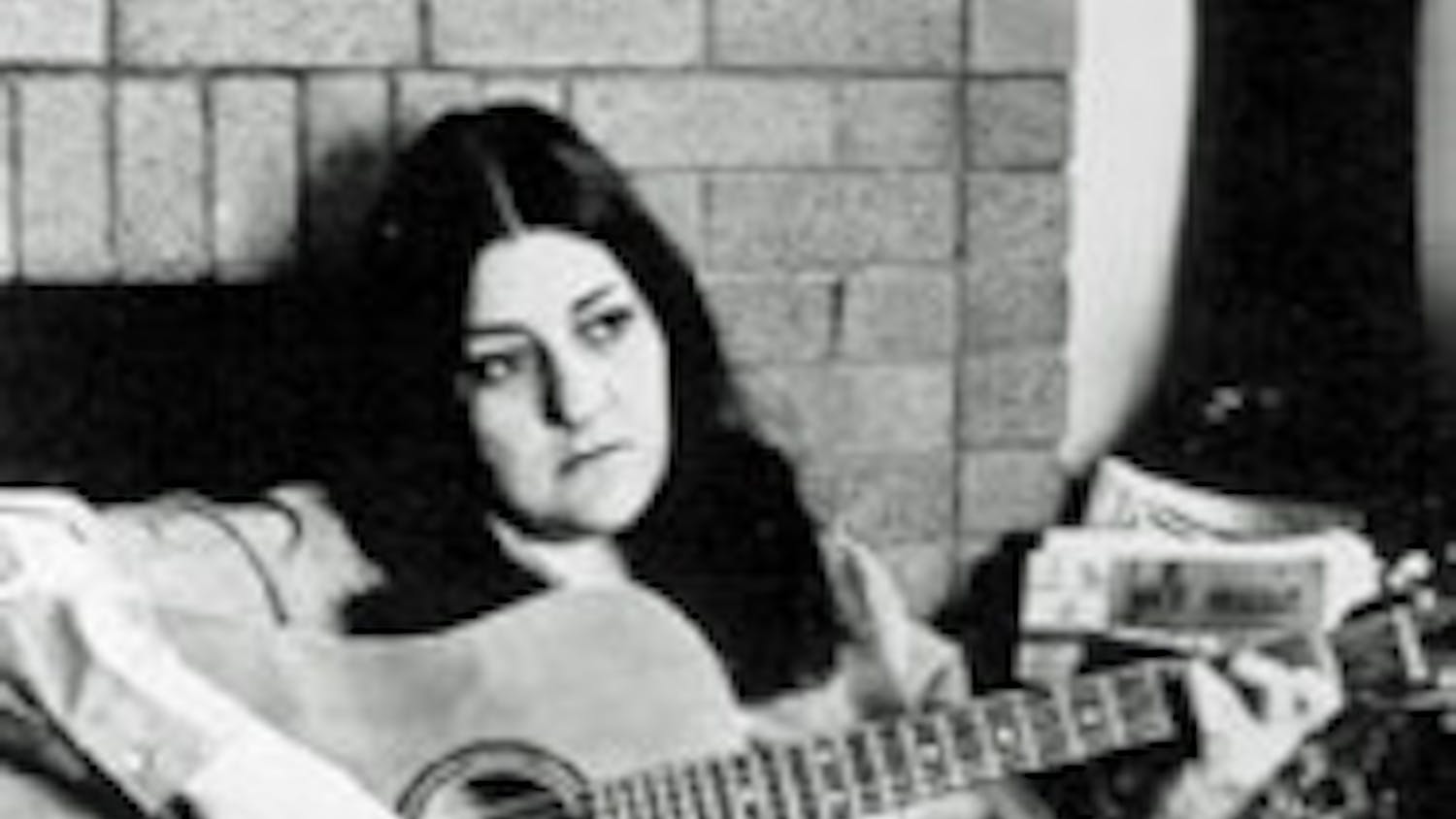Jordyn Lowe* remembers the moment she began to despise her body.
She was in the shower, reaching back for shampoo when she saw excess skin rolling over her hip.
FAT.
She pinched it, then moved on to her thighs, stomach and arms.
She was 5-foot-4 and weighed 121 pounds, but she said she felt like "Shamu."
Tears dripping from her face onto the shower floor, Lowe vowed she would never let herself get "big" again.
***
Left. Right. Left.
Lowe moves faster. Sweat drips off her nose and onto her chest. She's going to get where she wants to be - she can feel it.
Her idol: Marilyn Monroe. Mental and emotional distress are experiences Lowe can relate to. She loves Monroe's story.
Fame. Success. Perfection.
She will one day stand on stage while everyone applauds. But she has to be thin enough. That's why numbers matter.
A Wegmans medley of red, green and yellow peppers: 70 calories
Bean salad: 200
Cookie cake: 1,000
She gave in to the cake. She tried to fight with all her might to stay away from it, but the warm cookie cake covered in yellow frosting - her favorite - looked too appetizing. Plus, she had been starving herself for days, so why not?
A little treat for all of her hard work can't hurt that bad, can it?
It can. She feels full. She has to burn more. More than she ate. Burn double her daily intake.
Two thousand. She won't stop unless the number on the treadmill's screen reads "2,000 calories." It's her little secret. She'll never share it.
Left. Right. Left.
***
In one semester, the fall of 2011, Lowe lost 18 pounds.
She also became one of the 20 percent of college-aged women across the country with an eating disorder.
At UB, the official number of students treated for eating disorders this year is 60, said counselor Carissa Uschold of UB's Student Health and Wellness Center. But, she added, this is just a fraction of the students who are starving, bingeing and purging every day.
These unknown students - mostly women but an increasing number of men - are hard to find and even harder to help, because more than 80 percent of them are afraid or reluctant to come forward, according to statistics from the National Association of Anorexia Nervosa and Associated Disorders. Close to 48 percent of these students don't even admit they have a problem with food.
An innocent addiction
Lowe started counting calories in a pocket-sized yellow notebook. She carried her notebook with her everywhere and - like Bridget Jones - made calculations and notes about herself.
Fat-free Swiss cheese: 45
Grilled Chicken: 200
Tea with milk: 10
Tostitos and edamame salad: 140 per half a cup
Stir-fried vegetables with teriyaki sauce: 95
Trail mix from Wegmans' "bulk" section: 240
In between classes, she rushed to the gym to burn more than she had consumed.
Two hours elliptical: 650
Five miles on the treadmill: 700
She wouldn't dare do biceps curls, fearing it would make her arms look bigger rather than shrinking them. As long as her calories burned were double her calories consumed, she felt safe.
"I'd wear gym clothes to campus and in between classes I had a place to go where I felt I needed to be," she said. "While my group of friends went to lunch or socialized in the library, I was with my pals: treadmill and elliptical."
A few weeks into her new lifestyle, Lowe's friends began to notice a change. She had lost about six pounds and had gained new confidence.
She began to think of calorie intake and exercise as a game.
"I would Google how many calories were in cookie cake and make sure I'd burn at least twice that amount before I had a piece for dinner," Lowe said. "One night, I decided to treat myself to McDonald's and then spent the next day at the gym until I burned at least 1,200 calories."
Lowe thought she had discovered the secret to looking good and eating what she wanted with no restrictions. Burning calories gave her life purpose. Her mood depended on creating negative numbers. If she was in the black, she headed for the gym.
She did not consider her situation to be a "disorder," nor did she think it strange that soon, the minute she saw food, she thought of its calorie count.
After two months and 18 pounds, her friends began to worry. One of Lowe's roommates asked her to step on the scale. It read 103 pounds.
Lowe's habits were no longer an innocent addiction. She promised her friends she would eat.
She did. Then she went to the gym.
Lowe also began to see fat and flaws on her body that weren't there, a condition known as "body dysmorphia," which made her feel incompetent and unworthy. This led her to feel depressed and anxious because of the imagined fat in her thighs and arms.
"That's the way an eating disorder works," said UB alumna Allie F., who suffered from disordered eating habits and bulimia for 11 years, four of which at UB. "It attacks your thought processes and your sense of self worth until it's fully controlling your mind and has you believing that you're nothing and deserve nothing."
Holding on to secrets
Allie found out she needed help from her computer.
On a whim, she took a test on UB Counseling Center's online eating disorder survey. The results flashed in front of her: "YOU HAVE AN EATING DISORDER."
She had already met the Diagnostic and Statistical Manual of Mental Disorders (DSM-IV) criteria for bulimia, but had ignored it. The all-caps words, however, made her act. She is unsure as to exactly why and cannot fully explain it, but seeing the words on the screen before her impacted her so strongly, she wanted to get help.
She had been struggling with disordered eating for 11 years on and off; she always blamed herself for her disorder and isolated herself from her support system, just like Lowe did.
When Allie was in seventh grade, she went on Weight Watchers after gaining a few pounds from her birth control pills. She was upset about her weight gain but did not expect her perfectionist personality to allow her diet to completely control her mind.
"I quickly became obsessive about the program and people's comments about my weight loss encouraged that," Allie said. "[I was] also having crazy cravings and obsessive food thoughts because I didn't realize at the time that the number of 'points' that the program had me eating was less than the number of calories where most women's bodies go into starvation mode. I lost a large amount of weight in a few months, then fell into a cycle of bingeing, purging and starving, and gained the weight back."
This cycle continued on and off throughout high school. Allie's weight would yo-yo depending on whether she was obsessively counting calories more or bingeing more.
"It was like a really awful pendulum, with no happy medium of just normal eating," Allie said. "And it wasn't until I started seeing UB's nutritionist that I linked the cycle back to that first diet."
Allie advises anyone struggling with any sort of an eating disorder is to resist the urge to isolate, she said. UB's large campus makes it easy for students to detach from others and keep what they are doing secret, which is exactly what Lowe did once her friends caught on to her disorder.
Uschold is not surprised Lowe hid her disorder so well.
"There is often an element of shame associated with eating disorder symptoms and behaviors that can lead an individual to hide or deny things," Uschold said. "They do have some insight and awareness surrounding what is going on but have utilized the behaviors as coping and have a difficult time bringing these out into the open."
As a therapist, Uschold has developed an understanding of the path eating disorders can take. She tries to help her patients see that, too.
"[I'm] able to gently assist clients in becoming more aware of what they need and assisting them in listening to their own voice rather than the negative voice of their eating disorder," Uschold said.
It took Lowe four semesters at UB before she was able to listen to her own voice, rather than the voice of her disorder.
"I was ecstatic [that I weighed 103 pounds]," Lowe said. "But also realized I needed to be more careful - people were starting to catch on to my secret."
So Lowe began to eat in front of the people who noticed her weight loss and then sneak off to the gym. The routine exhausted her. It also isolated her from her friends.
But whenever she had doubts, she would strip down and look at her naked body.
She saw herself through the eyes of the disease.
She didn't see a beautiful and talented woman when she looked in the mirror, like her friends always told her she was, she said. Rather, she saw fat - fat that would keep her from reaching her ultimate goal of becoming an actress. Fat that would keep her from ever finding true love. Fat that led her into relationships with men who verbally abused her and made her feel even more worthless, like she felt she deserved to be treated.
Lowe thought her numbers game meant she was in charge of her life - that she was in control.
Now - two years later - she sees that the disease controlled her.
The inception
Anna Gautier, a junior Asian study major, suffered from depression and anxiety, which sparked her disorder.
"Eating disorders commonly stem from current or past stresses, where an individual may not feel in control," said Jessica Nyrop, assistant director for academic instruction in UB's Division of Athletics. "College is a time where an individual can experience a slew of different stresses such as class schedule, grades, parental stresses or scholarships. These stresses may trigger the onset or relapse of an eating disorder."
Looking back, Gautier is aware that she focused on her body as a way of dealing with her anxiety and depression - she did not realize how obsessed she became with counting calories until she began to barely eat and purge after her small meals, she said.
She began to suffer from exhaustion and felt physically ill. When her eating disorder began to make her weak while going through everyday activities, she knew it was time to change.
Lowe also realizes now why her disorder surfaced: It was from a lack of control.
She believes many college students suffer from disordered eating because it is one of the only aspects they feel they have control over.
"We can study and work hard to an extent, but our final grade is ultimately up to the teacher," Lowe said. "Those of us who are not financially dependent have to worry about the cost of classes, books, etc., which is in the university's control. And especially in social situations, we're at an age where we're experimenting with relationships and people and we only have so much control over how others perceive us."
Changing habits
When Lowe was diagnosed with Korsakoff's syndrome, a neurological disorder caused by a lack of thiamine in the brain linked with chronic alcohol abuse and malnutrition, during the fall of 2013, she knew she needed to gain control over her life.
She remembers her mom telling her she looked "emaciated in the face."
She told one of her best friends she was ready to get help and began to attend therapy sessions to treat her Korsakoff's syndrome and eating disorder.
Since January, Lowe has been traveling the road to self-love.
Gautier opened up to a friend who had also struggled with disordered eating. She said having supportive friends was the most important thing in her journey toward recovery.
She urges those who feel as if their environment places pressure to be as "beautiful and thin as models" to escape that environment and surround themselves with friends.
"Opening up to your friends about what you're going through so it stops being your dirty secret and starts being something that you can fight against with the help of a support system [is crucial]," Allie said. "If you do this early on, you will save yourself a lot of pain, time and money in the long run."
Lowe took a unique approach on her road to self-love, finding solace in art. Though she attends professional therapy sessions, she needed to do more on her own to escape the demons living in her head.
"After you recognize you have a problem, how, when and why you get help depends on the person," Lowe said. "There are many forms of therapy one could do to overcome a disorder - from counseling to art classes. For me, I personally think the best form of therapy is figuring out what you're passionate about and throwing yourself into that."
So she threw herself into singing and acting - her greatest passions. Since January, she has had professional headshots taken and produced her first two music videos.
She finally put down her yellow notebook - rather than constantly writing down what she eats and how many calories she needs to burn to fill the emptiness inside of her, she doodles. She draws images of things that make her happy, accompanied by quotations about friendship and love.
She began to pre-cook her meals so she would eat them and know they were an appropriate portion size. Tupperware boxes became her "thing" rather than bingeing on cookie cake and then burning double a day's worth of calories at the gym.
Lowe considers herself lucky to have the support system of friends and family to open the bars of the eating disorder cage she had managed to lock herself in. She genuinely does not know if she would be alive if it were not for them.
Only 50 percent of people report ever being cured from an eating disorder, according to statistics provided by North Dakota State University.
Looking forward
Lowe is not sure whether she is cured "for good." She believes eating disorders can sneak their way back into the lives of those who have suffered because of how integrated a disorder can become with one's life.
But she has overcome the toughest battle: taking her first few steps toward self-love.
She knows she's not 100 percent there yet, but love from her friends and family drives her to continue this road to recovery.
"People don't realize the impact they can have just by showing someone how much they mean to you," Lowe said. "When I'm struggling with loving myself, knowing that I am loved by others makes all the difference."
She hopes other students in her former position will understand the importance of breaking free from the chains of an eating disorder. Simply telling someone else can save your life, she said.
*The Spectrum has changed this student's name to protect her anonymity.
email: features@ubspectrum.com





